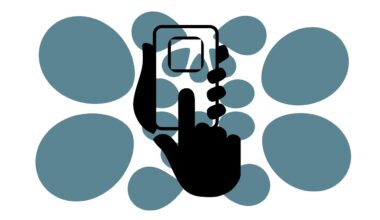Turning Event Registrants into Active Community Members
Building a vibrant community from event registrants begins with understanding their motivations and expectations. Once participants sign up for an event, they often have diverse interests and backgrounds. Engaging them effectively requires clear communication and fostering connections among attendees. By creating targeted content and messaging, event organizers can enhance attendance and create a welcoming atmosphere. Start by outlining the benefits of participation, emphasizing how active involvement can lead to personal and professional development. Encourage registrants to network both during and post-event through various channels. Utilize social media platforms to break the ice prior to the gathering. Facilitate introductions through messaging groups, allowing attendees to share their interests and plan meet-ups. In addition to traditional events, consider online community-building initiatives to further nurture connections. A hybrid approach can accommodate different preferences, ensuring all feel welcome in your community. In this process, showcasing success stories from past attendees can inspire new participants. Lastly, actively seeking feedback helps refine future events, making attendees feel valued and heard. This continuous improvement promotes a culture of engagement that keeps members returning for future activities and fosters long-term relationships.
Retention of community members hinges on ongoing interaction and providing value post-event. Following your initial gathering, it’s essential to keep the momentum sustained. Consider establishing a dedicated online platform, such as a forum or group, where event participants can discuss topics relevant to their interests. This space allows continued communication, networking, and sharing resources, benefiting each member and the collective community. By creating and disseminating valuable content, such as e-books or webinars, you cultivate an environment that encourages ongoing learning and engagement. Encourage members to share their experiences and create discussions, which will generate excitement about upcoming events. Regular updates regarding community initiatives, projects, and achievements keep members informed and involved. Recognizing members’ contributions through shout-outs or rewards can motivate and encourage others to participate actively. You could also implement mentorship programs where seasoned attendees can guide newcomers. This fosters a sense of belonging and purpose, transforming passive participants into active contributors. Additionally, spotlight events focused on specific community challenges or interests to deepen connections and collaboration. Engaging members at every opportunity lays the foundation for a thriving, dynamic community.
Creating Meaningful Connections
Connections within your community are fundamental to nurturing long-term relationships. To foster these relationships, consider organizing icebreaker activities or networking sessions during events. This encourages attendees to interact and establishes foundational connections right away. Additionally, providing avenues for collaboration can enhance involvement among participants. Create committees, volunteer opportunities, or project teams that focus on community goals, driving engagement and ownership among members. Furthermore, encourage workshops where attendees can learn from one another, fostering peer learning experiences that strengthen bonds. Schedule regular informal meet-ups or online webinars that discuss relevant topics to keep connections alive. These events can serve as a platform for shared knowledge and experiences, allowing members to continuously benefit from their community. Ignite passion by showcasing guest speakers or hosting panel discussions with industry leaders. Furthermore, incentivize attendees to bring friends, expanding your network while promoting the essence of community support. As connections strengthen, cultivate a sense of belonging that bolsters commitment. Remember that personal connections often translate to professional opportunities, enhancing each member’s experience and value in your community.
Another key aspect of developing active community members is providing continuous learning opportunities. To engage registrants effectively, offer workshops, webinars, or training tailored to their interests. Creating an educational calendar can maintain interest while inviting feedback to refine offerings. Personalize learning by conducting surveys to gauge participants’ preferences. Such initiatives not only foster loyalty but empower community members to enhance their skills and knowledge. Leverage partnerships with local businesses, organizations, or experts to offer co-hosted events, granting registrants access to exclusive resources, tools, or certification programs. Engagement is further boosted when participants can apply what they learn practically. Encourage members to share their insights or experiences during community meetings, reinforcing a culture of collaboration and idea-sharing. This reinforcement cultivates a diverse pool of knowledge and may attract new registrants eager to join a learning-focused community. Additionally, spotlighting and celebrating achievements or progress through newsletters or social sharing helps maintain motivation. These accomplishments turn into inspiration for others, perpetuating growth and engagement throughout the network. In this way, a thriving educational culture promotes active participation and enhances overall community satisfaction.
Empowering Through Leadership
Leadership also plays a vital role in transforming registrants into active community members. Establishing leadership roles and opportunities for members allows them to feel empowered and invested. Encourage individuals to lead discussions, host events, or manage projects. This responsibility nurtures an environment where members feel a sense of ownership and pride in their community. Moreover, regular leadership circles or brainstorming sessions can unite members, offering a platform for collective growth and innovation. Providing resources and guidelines helps equip potential leaders with the tools they need for success. Consider offering mentorship to guide them on first steps, making leadership accessible to everyone. The more members feel like stakeholders, the more likely they are to contribute actively. Emphasize the importance of feedback within these leadership roles. Encouragement of open dialogue leads to trust and collaboration. Celebrate and share the contributions of leaders in your community, showcasing their achievements publicly. Such recognition motivates others to step up and embrace leadership opportunities. Consistent recognition reinforces the value of each person’s involvement, strengthening community bonds further and enhancing overall participation.
Another powerful method to enhance engagement is through gamification strategies. Gamification introduces elements of competition and rewards into community-building exercises, resulting in increased motivation to participate. Create challenges or contests that promote interactions, encouraging members to collaborate. Offer incentives such as discounts on events, exclusive access to resources, or branded merchandise for active participants. By establishing a point system for various activities—attending events, sharing ideas, or completing tasks—members feel incentivized to engage more frequently. Implementing leaderboards can introduce a friendly competition, creating excitement and encouraging participation among community members. Additionally, use memorable challenges to foster creativity. Implement a trivia quiz or organized scavenger hunts during community gatherings to enhance social interactions. These fun-filled activities promote teamwork and break the ice, leading to better networking opportunities. Furthermore, continually evaluate and update the gamification parameters based on member feedback to maintain engagement. Highlight high achievers to further stimulate community pride, encouraging a continuous cycle of participation. Establishing a playful environment adds a unique twist to traditional community-building methods while making the experience enjoyable.
Measuring Engagement and Success
Lastly, assess engagement and success through various evaluation metrics. Establishing clear objectives for community-building efforts is crucial for measuring effectiveness. Monitor participation rates, feedback scores, and retention statistics to identify areas for improvement. Conduct regular surveys or focus groups to glean insights into member experiences and satisfaction. This direct feedback will help refine future events and initiatives while anticipating individual needs. Additionally, examining online engagement, such as social media interactions or forum activity, will provide a comprehensive view of member engagement. Track the growth of community interactions over time to assess the effectiveness of implemented strategies. Capturing and analyzing this data is crucial for continuous improvement and shaping future community activities. Regular reporting on these metrics can help members see the positive impact of their involvement. Sharing success stories and lessons learned within your community also fosters transparency and openness. Celebrating achievements fosters motivation, encouraging members to continue their involvement. Engagement ultimately hinges on recognizing each member’s role and impact on the community as a whole, establishing a thriving hub for collaboration and growth.
In conclusion, transforming event registrants into active community members requires intentional strategies focused on engagement, empowerment, and continuous value generation. By creating meaningful connections, facilitating ongoing learning, and establishing a strong leadership structure, the community becomes a source of success for all. Gamification adds a fun twist that keeps members motivated, while data-driven approaches help measure progress and optimize future initiatives. Leaders should prioritize building relationships, celebrating achievements, and continuously refining methods based on participant feedback. A thriving community fosters commitment and develops a place where individuals can learn, grow, and connect passionately. Through these approaches, organizers can turn participants into ambassadors of their community, eager to contribute and support future endeavors. Ultimately, the focus remains on encouraging interaction, cultivating a culture of recognition, and ensuring every member feels valued. As communities evolve, they should adapt their strategies according to members’ needs, continuously striving to enhance the experience for everyone involved. With these foundational concepts in place, the community can flourish, meeting the dynamic needs of its members and ensuring lasting success.


